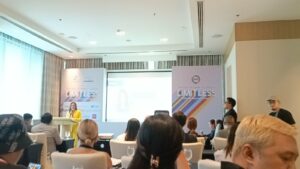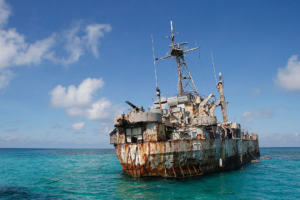As a consequence of the rise of technology and present-day infrastructure, power has become necessary in modern society. Reliable electricity supports the backbone of society as we know it, powering schools, hospitals, and communication systems while allowing businesses and industries to operate efficiently. Lighting, heating, and cooling are just some of the basic ways access to power enhances people’s lives. With the advent of innovations, the utility is crucial for education, information access, and overall well-being as well.
Access to electricity is essential for societies to grow and improve the quality of life for their people because, without a stable power supply, communities face significant barriers to development and resilience.
Figures from the Department of Energy (DoE) show only 91.1% or 25.3 million out of 27.727 million Filipino households have access to electricity. This means that almost 3.677 million households in the country still live off-grid despite having an urbanization rate of 50%. The DoE also noted that 1.285 million of 3.677 million households that need electricity are in the off-grid areas, which include “those residing in the main grid but are very difficult to reach through regular connection and require alternative solutions.”
Looking at the country’s electrification rates by region emphasizes that only two out of the 17 regions, the National Capital Region (NCR) and Caraga Administrative Region, have achieved full electrification, where every household has access to electricity. While most of Luzon and Visayas have high electrification rates of more than 90%, four out of six Mindanao regions are still lagging with more than 10% of their households still living off-grid.
Perhaps the most alarming among these regions is the Bangsamoro Administrative Region of Muslim Mindanao (BARMM), where fewer than 45% of their households have access to power. Data from the National Electrification Administration (NEA) shows that only 282,330 households out of 703,499 potential connections in Mindanao have been electrified, highlighting the substantial gap that remains in achieving universal access to electricity on the island.
“It’s a big challenge for us in NEA. It’s a big challenge for the 121 electric cooperatives (ECs). But I always tell my colleagues in NEA and the electric cooperatives that: the challenge is accepted. We will do this and one of the areas of concern, really, is in the island of Mindanao,” NEA Administrator Antonio M. Almeda said in a statement.
Several factors can be attributed to the inaccessibility of electricity in the Philippines, but the country’s insufficient infrastructure and geography remain significant impediments to electrification, particularly in remote and isolated areas.
Ensuring sufficient and affordable access to electricity, especially in far-flung areas, is consistently one of the flagship programs of the government. Last year, the DoE launched the National Total Electrification Roadmap (NTER) which aims to achieve 100% electrification in the country by 2028.
Under Republic Act No. 11646 otherwise known as “The Act of Promoting the Use of Microgrid Systems to Accelerate the Total Electrification of Unserved and Underserved Areas Nationwide” or the “Microgrid Systems Act,” the DoE is set to address the Philippines’ energy crisis in far-flung areas through four strategies namely: household electrification — regular connection, distribution line extension, stand-alone home system (SAHS), and microgrid system.
Microgrids are self-sufficient energy systems utilized within a localized group of users such as schools, hospitals, malls, and even in rural communities. These systems produce their power usually through sustainable means like solar panels, wind turbines, and combined heat and power generators with some having energy storage capacities from batteries.
Recently, the government awarded a contract to the Maharlika Consortium, consisting of Manila-based Maharlika Clean Power Holding, joint venture firm CleanGrid Partners, and Singapore-based renewable energy company WEnergy Global PTE Ltd., to provide electricity services in eight unserved areas in Cebu, Quezon, and Palawan.
The consortium plans to utilize a hybrid microgrid system composed of solar photovoltaic, energy storage systems, and diesel gensets in the province to provide 24/7 electricity services in no later than 18 months.
Meanwhile, the Integration of Productive Uses of Renewable Energy (I-PURE) program implemented by the NEA, DoE, and the Mindanao Development Authority (MinDA) and funded by the European Union (EU) through its Access to Sustainable Energy Programme (ASEP) can provide a solution to the inaccessibility of power in Mindanao and grant additional access to sustainable electrification in the country.
The three-year project began in the second half of 2021 with primary components focusing on livelihood opportunities, sustainable energization of households, and capacity building toward the effective management of renewable energy sources.
I-PURE’s first component covered the agriculture and fishing industries in Cotabato, Sultan Kudarat, and Tawi-Tawi, where implementing agencies and electric corporations provided solar-powered corn processing facilities, solar-powered rice millers, solar-powered coffee processing facilities, and two solar-powered water systems.
Moreover, the second component of the project energized more than 3,000 homes in Cotabato and nearly 2,200 households in Tawi-Tawi. Additionally, “component three” of the I-PURE project aimed to give capacity-building programs for people in the beneficiary communities.
The DoE’s alternative solution aimed to address the lack of power supply is by inviting firms to invest and provide electricity services to remote, unserved, and underserved areas in the country.
Through the agency’s Qualified Third Party program, private firms and local government units with the capability and willingness to comply with relevant technical, financial, and other requirements through a Competitive Bidding process can become an alternative electric service provider in certain QTP areas.
“The DoE is determined to fast-track its total electrification program for the country. We will make electricity available to all unserved and underserved households in the country, and the QTP program will help us realize our goal,” Former DoE Secretary Alfonso G. Cusi said in a statement.
Addressing the power crisis in the unserved and underserved markets of the Philippines is a herculean task that seeks to overcome the many challenges posed by the country’s geography and infrastructure. Initiatives such as the Microgrid Systems Act and programs like the I-PURE project showcase that by integrating sustainable energy solutions and enhancing infrastructure, the Philippines can pave the way for inclusive and sustainable electrification nationwide. — Jomarc Angelo M. Corpuz





